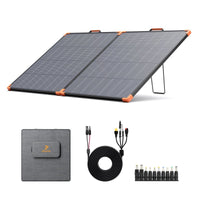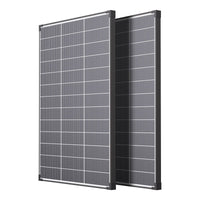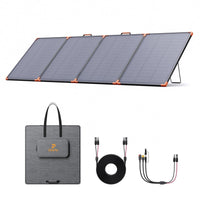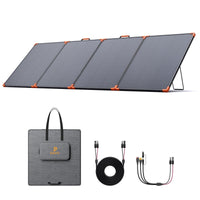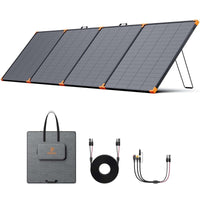P-Type vs N-Type: Best Cells for Portable Solar Panels
In the solar industry, every upgrade in technology means higher efficiency and better energy yield. Today, the two main crystalline silicon solar cell types—P-type and N-type—play a huge role not only in shaping the industry’s future but also in determining the return on your solar investment.
Let’s break down their key differences and what they mean for portable solar panels 🔋.
1️⃣ Raw Materials & Conductivity
P-Type Solar Cells
-
Doped with boron (trivalent element).
-
Current is carried mainly by “holes.”
-
More prone to light-induced degradation (LID), meaning performance drops over time.
N-Type Solar Cells
-
Doped with phosphorus (pentavalent element).
-
Current is carried mainly by electrons 🌀.
-
Long carrier lifetime with almost no light degradation → more reliable over years of use.
2️⃣ Manufacturing Routes & Efficiency
-
P-Type (PERC technology):
Uses passivation layers to reduce energy loss. Market dominant today, with mass production efficiency around 23% but nearing its technical ceiling (~24.5%). -
N-Type (TOPCon, HJT, IBC):
Advanced routes with higher potential. Efficiencies already above 25%, with stronger resistance to degradation and better performance in low light and high temperatures ☁️🔥.
3️⃣ Performance & Real-World Use
-
P-Type Advantages: Lower cost, mature manufacturing, still the mainstream option.
-
N-Type Advantages:
✅ Higher conversion efficiency
✅ Strong anti-degradation performance
✅ Better weak light response → important for portable solar panels used outdoors or on cloudy days
✅ Lower temperature coefficient → more power output in hot conditions
4️⃣ Market Trends 🌍
-
2022: PERC ruled with 91%+ market share.
-
2023: N-type surged, reaching ~40% of new capacity, showing a fast shift.
-
Future: N-type is set to dominate as costs fall and efficiency keeps improving.
❓ FAQ: P-Type vs N-Type for Portable Solar Panels
Q1: Which solar cells are better for portable solar panels, P-type or N-type?
👉 N-type cells generally perform better in portable panels because they offer higher efficiency, stronger durability, and better performance in weak light and hot conditions.
Q2: Are P-type solar panels still worth it?
👉 Yes. P-type panels are cheaper and widely available. But for portable solar, where every watt matters, N-type panels give you more long-term value.
Q3: Do N-type solar panels cost more?
👉 Currently yes, but the cost gap is shrinking fast. Many outdoor and camping users find the extra output worth the price difference.
✅ Final Takeaway
-
If you want short-term savings, P-type PERC is still fine.
-
If you want long-term reliability, higher power output, and future-proof tech, N-type TOPCon or HJT is the smarter choice 🔋.
👉 For portable solar panels, where every watt counts, N-type technology is the ultimate upgrade.
Share




